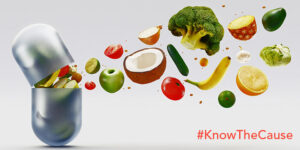

| Since moving to the new website/blog format, we’ve gotten most of the kinks worked out of the commenting system – I trust most of the people that read the blogs and take the time to comment have noticed that their comments are getting published. |
I want you to know that we certainly appreciate you taking the time to read our blog, and we doubly appreciate it when you take the time to type your thoughts out. I have just spoken to Doug and after a whirlwind lecture tour, he is going to start blogging again. He told me that he really loves the communication that this opens up between you and him.
One thing that we have decided to make a policy on the KTC blog is a comment approval system; each comment that you post is briefly reviewed then approved before it is published to the site. This serves the purpose of keeping spammers at bay. If your comment doesn’t look like spam, even if you are expressing something that is in disagreement with the article you are commenting on, it will get approved. We want to keep the comments clean, appropriate and spam free. If you noticed a delay between the time you post your comment and the time it shows up on the site, this is why.
We have a good volume of commenters at this point. While occasionally Doug or I will take time to read through comments and respond to them, you have to remember that the blog is a small part of what goes on at KTC. Doug is busy shooting shows, writing, and running a small business (which is no small feat) while trying to balance personal time, time with his family and maintaining his health. I try to balance my time between my course load at The University of Texas, writing content for the blog and the other part time jobs I maintain. More often than not, you probably won’t get a personalized response to a blog comment from KTC staff. However, one of the great parts about the blog is the community that it provides; your fellow readers are very smart, and very often, you can find some great advice from other commenters.
I hope this clears up any confusion on the commenting system here on the blog.
I did read a comment the other day asking about Kaufmann 1 sweeteners. As most of you probably know, the Kaufmann 1 diet seeks to starve fungi that may have taken hold inside your body and limit your exposure to mycotoxins that contaminate certain foods. Limiting sugar consumption (sugar are fungi’s preferred food source) is a key part in this process. There are, however, a few sweeteners that Doug allows on his diets.
Stevia is the most notable of the sweeteners. Stevia is derived from an herb, is many times sweeter than sugar, and is calorie free. Stevia in any amount is allowed on Kaufmann 1 and is available at almost all health food stores.
Xylitol is a more recent addition to the Kaufmann 1 sweetener family. In some forms, it has the same texture/consistency as regular sugar, making it great for substituting in baking. Some xylitol comes from birch trees, but some comes from corn cob. While Doug is very firmly against corn products, his research has led him to believe that corn-derived xylitol is mycotoxin free and therefore safe for consumption.
Honey is allowed sparingly, and usually not until you are on the Kaufmann 2. It is excluded from Kaufmann 1. If you are combatting symptoms and they return after adding honey back into your diet, it might be wise to discontinue use.
Doug briefly condoned the use of agave but has since reversed his position. Agave nectar has become a darling sweetener of health junkies because of it’s low glycemic effect. While this is great if you are addressing diabetic issues, it doesn’t address any fungal or mycotic issues. (Although if you’ve read the Fungus Link to Diabetes, you might see some connections between the two issues…) Doug’s research has lead him to believe that agave can feed fungus; therefore, it is strongly discouraged on any of the Phase diets.
If you are new to any of the Phase diets, be sure to get into the habit of reading labels. Corn syrup and high fructose corn syrup are obvious offenders, but often times sugar is just listed as fructose or “evaporated cane juice” (esp. in health food stores). These are all ways companies try to disguise their sweeteners from savvy shoppers.
I hope this clears up any questions on Kaufmann 1 sweeteners!
Doug Kaufmann has written many books that cover a full range or health issues. Find out which of his books best suits you by clicking the button below.
Doug Kaufmann developed his diet after years studying the clinical effects of pathogenic fungi on the body. Fungi and yeasts can become parasitic organisms on and inside our body, causing health problems that can be difficult to diagnose. Learn more about the Kaufmann Diet, change your life and know the cause.
We encourage all visitors to this site to take some time and study these technical articles prior to initiating lifestyle changes, including dietary changes and to do so with their physician’s awareness and approval. The articles posted in this link are scientific and with few exceptions are taken from medical journals familiar to healthcare workers.
Looking for help assembling antifungal Kaufmann Diet approved recipes for breakfast, lunch or dinner? We have several videos, books and recipe write ups here on Know the Cause that will help your health journey. The recipes in this section are so good, you’ll feel like you’re indulging. No sacrifice needed! Enjoy.
© 2024 Mediatriton Inc. All Rights Reserved • Website by Skynet Solutions